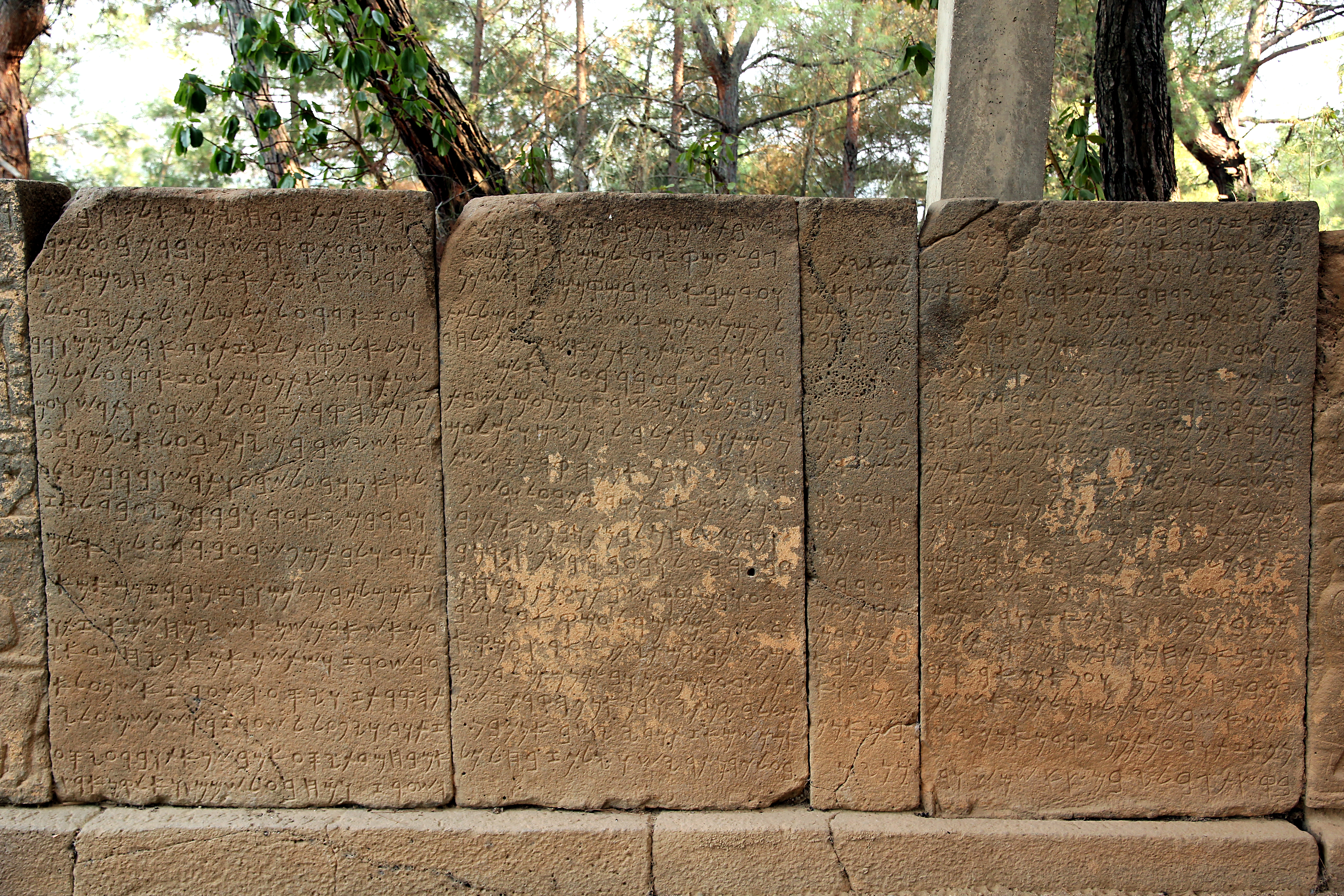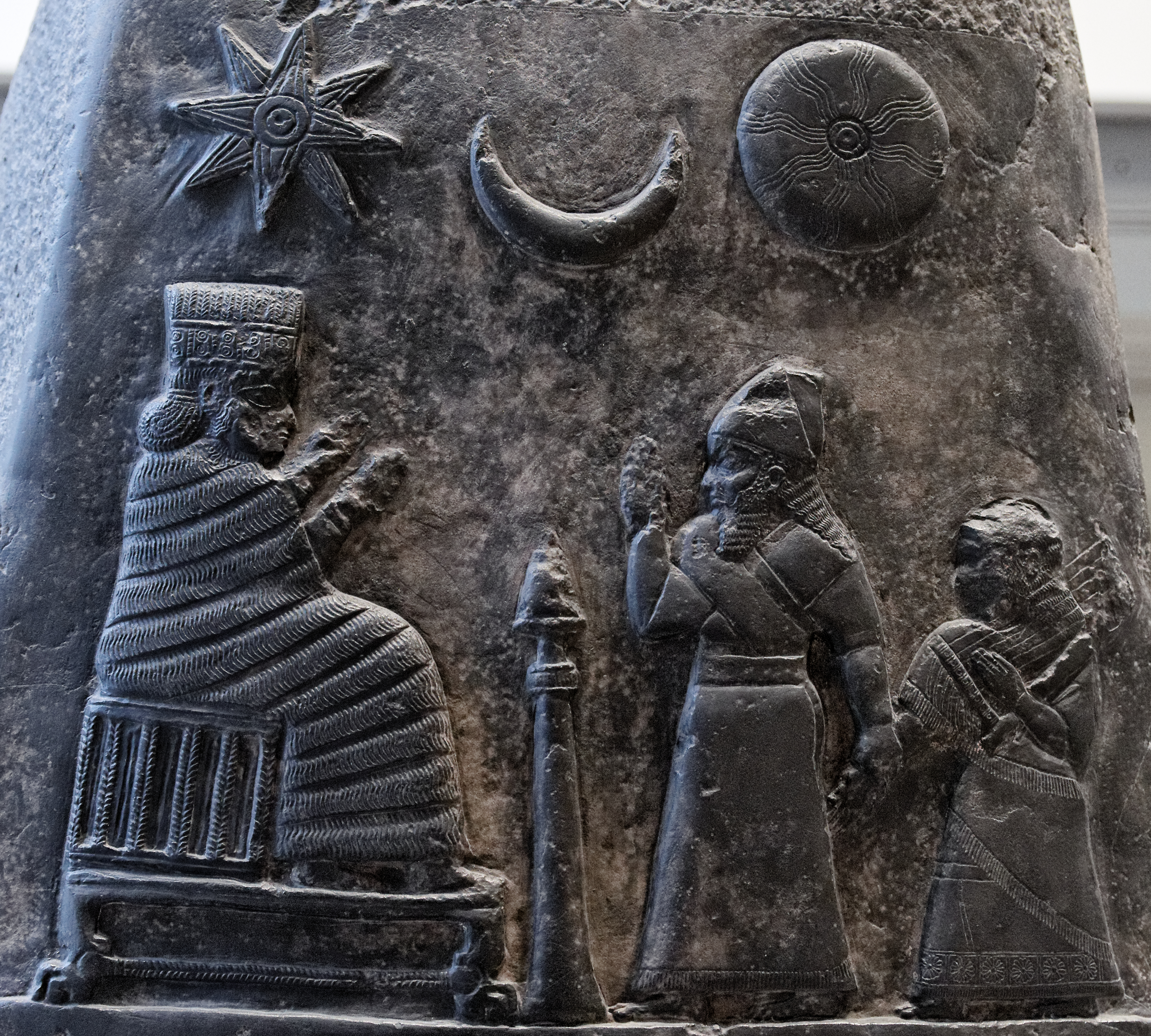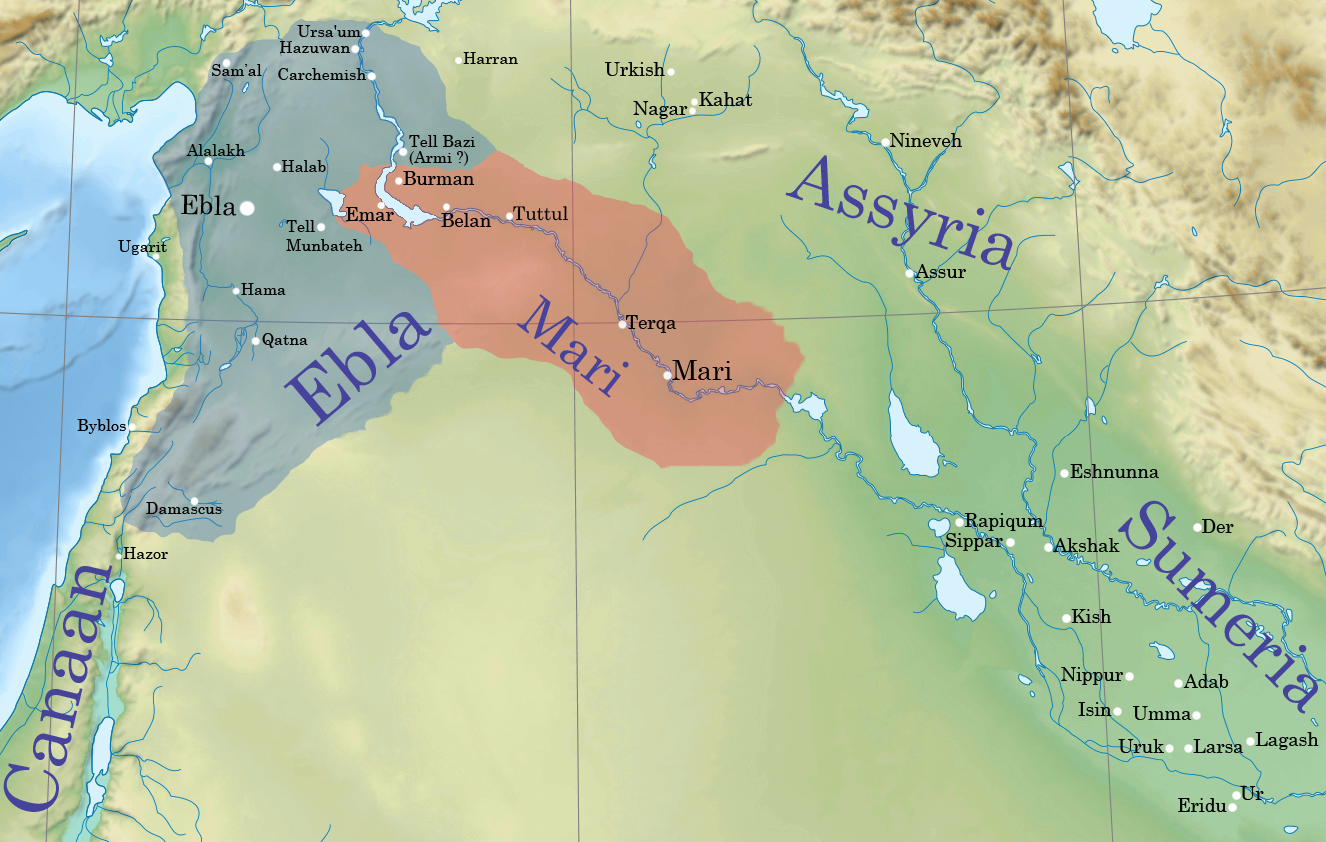|
Hadabal
Hadabal (also spelled 'Adabal) was a god worshiped in Ebla and its surroundings in the third millennium BCE. He was one of the main gods of that area, and appears frequently in Eblaite documents. His character is not well understood, though it has been proposed that he might have been an agricultural or lunar god. Like the city's tutelary god Kura and his wife Barama, he is absent from sources postdating the destruction of Ebla. Name and origin The name Hadabal was written as dNI-''da''-KUL or dNI-''da''-BAL in Eblaite cuneiform. The KUL sign being a simplified version of BAL, employed in texts later than the time of the vizier Arrukum. Alfonso Archi assumes that it belonged to a linguistic substrate, similar to these of other Eblaite gods, including Adamma, Aštabi, Išḫara and Kura. The existence of a non- Semitic and non-Hurrian substrate language in ancient Syria has been first proposed by Igor M. Diakonoff, who in 1971 concluded that Išḫara and Kubaba, while worshipe ... [...More Info...] [...Related Items...] OR: [Wikipedia] [Google] [Baidu] |
Kura (deity)
Kura was a god worshiped in Ebla (modern Tell Mardikh in Syria) in the third millennium BCE. He was the tutelary god of the city, as well as the head of the local pantheon. While his functions are difficult to ascertain, it is well attested that he was connected to the institution of kingship. The etymology of his name is presently unknown, and it is commonly assumed that it belongs to an unknown linguistic substrate, similar to the names of some of the other Eblaite deities, such as Aštabi, Hadabal or Išḫara. Kura's spouse was the goddess Barama, who like him was only worshiped in Ebla. After the destruction of the city both of them disappear from records. A number of proposals have been made regarding identification of deities attested from later periods with Kura, but most of them are not widely accepted. Name and origin The oldest attestations of Kura come from administrative texts predating the destruction of Ebla by thirty five to forty years. The name of the god is ... [...More Info...] [...Related Items...] OR: [Wikipedia] [Google] [Baidu] |
Išḫara
Išḫara was a goddess originally worshipped in Ebla and other nearby settlements in the north of modern Syria in the third millennium BCE. The origin of her name is disputed, and due to lack of evidence supporting Hurrian or Semitic etymologies it is sometimes assumed it might have originated in a linguistic substrate. In Ebla, she was considered the tutelary goddess of the royal family. An association between her and the city is preserved in a number of later sources from other sites as well. She was also associated with love, and in that role is attested further east in Mesopotamia as well. Multiple sources consider her the goddess of the institution of marriage, though she could be connected to erotic love as well, as evidenced by incantations. She was also linked to oaths and divination. She was associated with reptiles, especially mythical '' bašmu'' and ''ḫulmiẓẓu'', and later on with scorpions as well, though it is not certain how this connection initially devel ... [...More Info...] [...Related Items...] OR: [Wikipedia] [Google] [Baidu] |
Resheph
Resheph (also Reshef and many other variants, see below; Eblaite , ''Rašap'', , ''ršp'', Egyptian ', , ''ršp'', ''Rešep̄'') was a god associated with war and plague, originally worshiped in Ebla in the third millennium BCE. He was one of the main members of the local pantheon, and was worshiped in numerous hypostases, some of which were associated with other nearby settlements, such as Tunip. He was associated with the goddess Adamma, who was his spouse in Eblaite tradition. Eblaites considered him and the Mesopotamian god Nergal to be equivalents, most likely based on their shared role as war deities. In the second millennium BCE, Resheph continued to be worshiped in various cities in Syria and beyond. He is best attested in texts from Ugarit, where he was one of the most popular deities. While well attested in ritual texts and theophoric names, he does not play a large role in Ugaritic mythology. An omen text describes him as the doorkeeper of the sun goddess, Sh ... [...More Info...] [...Related Items...] OR: [Wikipedia] [Google] [Baidu] |
Barama (goddess)
Barama (Eblaite: '' dba-ra-ma'') was a goddess worshiped in the Syrian city of Ebla in the third millennium BCE as the wife of its tutelary god, Kura. She is not attested from any sources postdating the destruction of the city. Character Barama was the wife of Kura, the tutelary god of Ebla. She is relatively infrequently attested in Eblaite texts. Only five mentions come from offering lists, and about twenty from other administrative documents. However, it can be assumed that she nonetheless headed the pantheon alongside her husband. The status of these two deities was reflected in their connection to the royal couple of the city. Alfonso Archi proposes that her name should be understood as "full of color," and that it is derived from the Semitic root *''brm''. A possible cognate word, ''barāmu'', "to be multicolored," is known from Akkadian texts. Walther Sallaberger notes that it has been proposed that the name referred to her colorful clothes. Archi also considers it pos ... [...More Info...] [...Related Items...] OR: [Wikipedia] [Google] [Baidu] |
Yarikh
Yarikh (Ugaritic: , , "moon"), or Yaraḫum, was a moon god worshiped in the Ancient Near East. He is best attested in sources from the Amorite city of Ugarit in the north of modern Syria, where he was one of the principal deities. His primary cult center was most likely Larugadu, located further east in the proximity of Ebla. His mythic cult center is Abiluma. He is also attested in other areas inhabited by Amorites, for example in Mari, but also in Mesopotamia as far east as Eshnunna. In the Ugaritic texts, Yarikh appears both in strictly religious context, in rituals and offering lists, and in narrative compositions. He is the main character in ''The Marriage of Nikkal and Yarikh'', a myth possibly based on an earlier Hurrian composition. The eponymous goddess was regarded as his wife in Ugarit, but she is not attested in documents from most other Syrian cities, and most likely only entered the Ugaritic pantheon due to the influence of Hurrian religion. Ugarit ceased to exis ... [...More Info...] [...Related Items...] OR: [Wikipedia] [Google] [Baidu] |
Adamma (goddess)
Adamma was a goddess worshiped in Ebla in the third millennium BCE, later also documented in Hurrian sources and in Emar. The origin and meaning of her name remain a matter of debate among researchers. It is commonly assumed that it originated in one of the Semitic languages and that it can be compared to Hebrew '' ʾădāmâ'', "soil" or "earth". An alternate view is that it belongs to a linguistic substrate at some point spoken in part of modern Syria. Hurrian origin has been proposed as well, but is considered implausible. In Ebla, Adamma received sacrificial sheep on behalf of the royal palace. She also had clergy of her own, as evidenced by references to a ''dam-dingir'' priestess in her service. Eblaite texts indicate she was also venerated in Hadani and Tunip. She was locally regarded as the spouse of Resheph, though the connection between them is not attested in later sources. After the fall of Ebla, she was incorporated into Hurrian religion, and in this context appears in ... [...More Info...] [...Related Items...] OR: [Wikipedia] [Google] [Baidu] |
Saggar (god)
Saggar (also Šaggar, Sanugaru, Šanugaru) was a god worshiped in ancient Syria, especially in the proximity of Ebla and Emar, later incorporated into the Hurrian and Hittite pantheons. His name was also the ancient name of the Sinjar Mountains. It is assumed that he was at least in part a lunar deity. Character Information about the character and development of Saggar is incomplete and difficult to interpret. The name itself is not spelled consistently, especially in sources from the second millennium BCE, and in particular the first consonant often varies between ''s'' and ''š''. The meaning of the name is unknown, and it has been proposed that it comes from a linguistic substrate unrelated to other languages of the Ancient Near East. Two primary aspects of Saggar seemed to be those of a deified mountain range and of a lunar god. Deified mountain range The name Saggar was applied to a mountain range presumably associated with the god, located in the north of modern Iraq, kn ... [...More Info...] [...Related Items...] OR: [Wikipedia] [Google] [Baidu] |
Sin (mythology)
Sin () or Suen (, ) also known as Nanna ( ) is the Mesopotamian god representing the moon. While these two names originate in two different languages, respectively Akkadian language, Akkadian and Sumerian language, Sumerian, they were already used interchangeably to refer to one deity in the Early Dynastic Period (Mesopotamia), Early Dynastic period. They were sometimes combined into the double name Nanna-Suen. A third well attested name is Dilimbabbar (). Additionally, the name of the moon god could be represented by logograms reflecting his lunar character, such as d30 (), referring to days in the lunar month or dU4.SAKAR (), derived from a term referring to the crescent. In addition to his astral role, Sin was also closely associated with cattle herding. Furthermore, there is some evidence that he could serve as a judge of the dead in the Ancient Mesopotamian underworld, underworld. A distinct tradition in which he was regarded either as a god of equal status as the usual hea ... [...More Info...] [...Related Items...] OR: [Wikipedia] [Google] [Baidu] |
Ebla
Ebla (Sumerian language, Sumerian: ''eb₂-la'', , modern: , Tell Mardikh) was one of the earliest kingdoms in Syria. Its remains constitute a Tell (archaeology), tell located about southwest of Aleppo near the village of Mardikh. Ebla was an important center throughout the and in the first half of the Its discovery proved the Levant was a center of ancient, centralized civilization equal to Ancient Egypt, Egypt and Mesopotamia and ruled out the view that the latter two were the only important centers in the Ancient Near East, Near East during the Early Bronze Age. The first Eblaite kingdom has been described as the first recorded world power. Starting as a small settlement in the Early Bronze Age ( ), Ebla developed into a trading empire and later into an expansionist power that imposed its hegemony over much of northern and eastern Syria. Ebla was destroyed during the It was then rebuilt and was mentioned in the records of the Third Dynasty of Ur. The second Ebla w ... [...More Info...] [...Related Items...] OR: [Wikipedia] [Google] [Baidu] |
Yakrub-El
Yakrub-El or Ikrub-El was a Mesopotamian god worshiped in Terqa in the kingdom of Mari in the early Old Babylonian period. Since his name is structured as if it were a theophoric personal name, is commonly assumed that he was a deified hero or ancestral figure in origin. He is absent from the sources postdating the destruction of Mari. Name and character Yakrub-El's name is structured like a theophoric name, and can be translated as "the god blesses." While Icihiro Nakata in an early study of this deity concluded that it should be understood as a reference a deity identical with Ugaritic El, Alfonso Archi argues that the elements ''el'' and ''il'' in Akkadian, Eblaite and Amorite names do not designate a specific deity, and considers the emergence of the god El to be an Ugaritic religious innovation. Variants of the name Yakrub-El already occur in the oldest Akkadian documents as given names. A single ordinary person bearing the name Yakrub-El is attested even in the corpus of ... [...More Info...] [...Related Items...] OR: [Wikipedia] [Google] [Baidu] |
Mari, Syria
Mari (Cuneiform: , ''ma-riki'', modern Tell Hariri; ) was an ancient Semitic people, Semitic city-state in modern-day Syria. Its remains form a Tell (archaeology), tell 11 kilometers north-west of Abu Kamal on the Euphrates, Euphrates River western bank, some 120 kilometers southeast of Deir ez-Zor. It flourished as a trade center and hegemonic state between 2900 BC and 1759 BC. The city was built in the middle of the Euphrates trade routes between Sumer in the south and the Ebla, Eblaite kingdom and the Levant in the west. Mari was first abandoned in the middle of the 26th century BC but was rebuilt and became the capital of a hegemonic East Semitic languages, East Semitic state before 2500 BC. This second Mari engaged in a long war with its rival Ebla and is known for its strong affinity with Sumerian culture. It was destroyed in the 23rd century BC by the Akkadians, who allowed the city to be rebuilt and appointed a military governor (''Shakkanakku''). The ... [...More Info...] [...Related Items...] OR: [Wikipedia] [Google] [Baidu] |
Hadad
Hadad (), Haddad, Adad ( Akkadian: 𒀭𒅎 '' DIM'', pronounced as ''Adād''), or Iškur ( Sumerian) was the storm- and rain-god in the Canaanite and ancient Mesopotamian religions. He was attested in Ebla as "Hadda" in c. 2500 BCE. From the Levant, Hadad was introduced to Mesopotamia by the Amorites, where he became known as the Akkadian (Assyrian-Babylonian) god Adad. Adad and Iškur are usually written with the logogram - the same symbol used for the Hurrian god Teshub. Hadad was also called Rimon/Rimmon, Pidar, Rapiu, Baal-Zephon, or often simply Baʿal (Lord); however, the latter title was also used for other gods. The bull was the symbolic animal of Hadad. He appeared bearded, often holding a club and thunderbolt and wearing a bull-horned headdress. Hadad was equated with the Greek god Zeus, the Roman god Jupiter ( Jupiter Dolichenus), as well as the Babylonian Bel. The Baal Cycle or Epic of Baal is a collection of stories about the Canaanite Baal, also refe ... [...More Info...] [...Related Items...] OR: [Wikipedia] [Google] [Baidu] |






